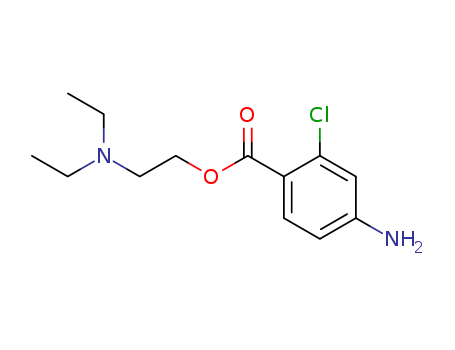- Chemical Name:Chloroprocaine
- CAS No.:133-16-4
- Molecular Formula:C13H19ClN2O2
- Molecular Weight:270.759
- Hs Code.:2922499990
- UNII:5YVB0POT2H
- DSSTox Substance ID:DTXSID8022799
- Nikkaji Number:J5.584K
- Wikipedia:Chloroprocaine
- Wikidata:Q2964133
- NCI Thesaurus Code:C72168
- RXCUI:20859
- Pharos Ligand ID:LHL2NHCUAKMX
- Metabolomics Workbench ID:43381
- ChEMBL ID:CHEMBL1179047
- Mol file:133-16-4.mol
Synonyms:2-chloroprocaine;chlor-procaine;chloroprocaine;chloroprocaine hydrochloride;Nesacaine;Nesacaine MPF





